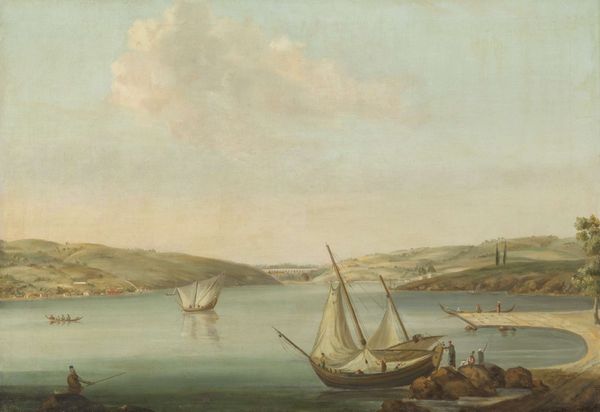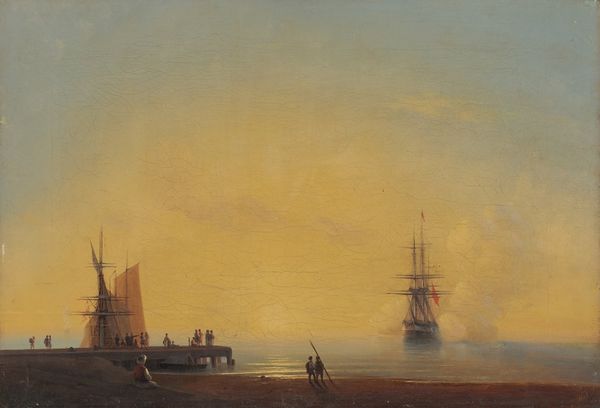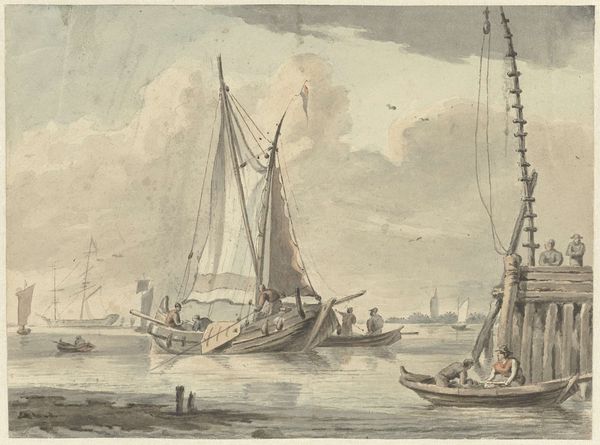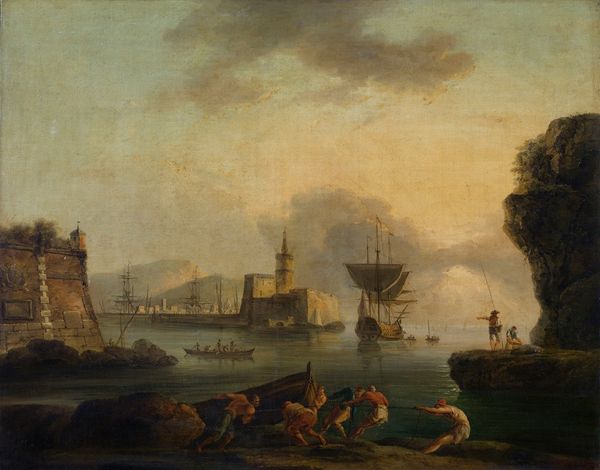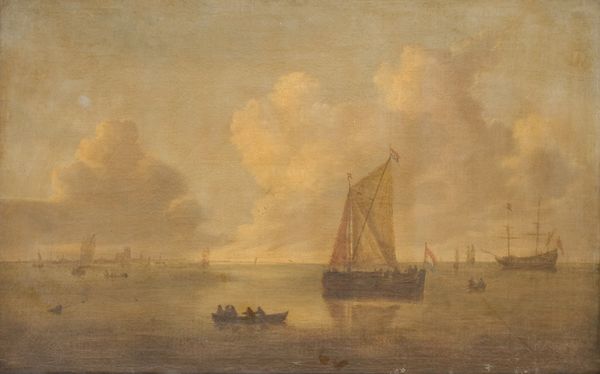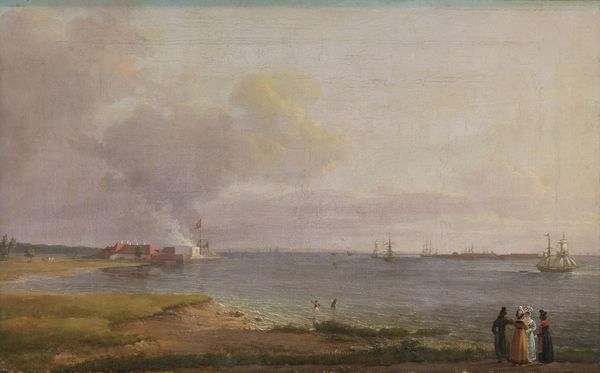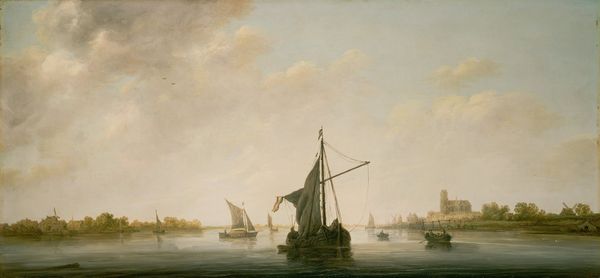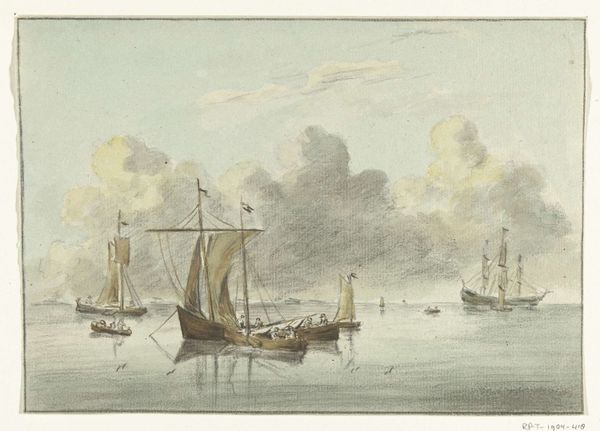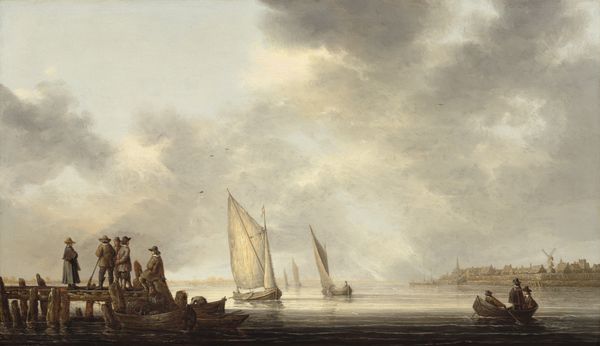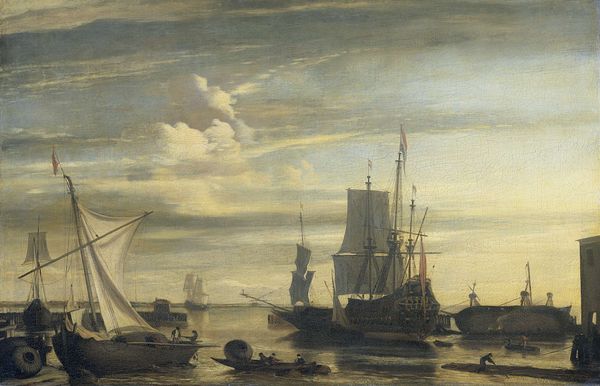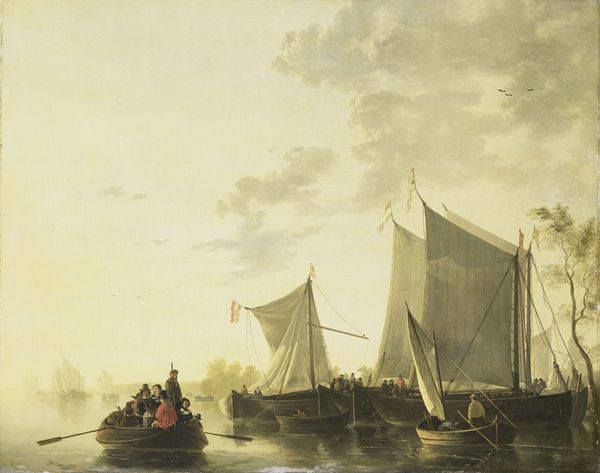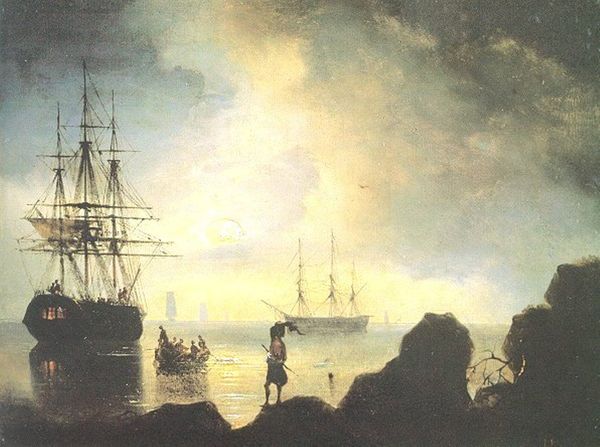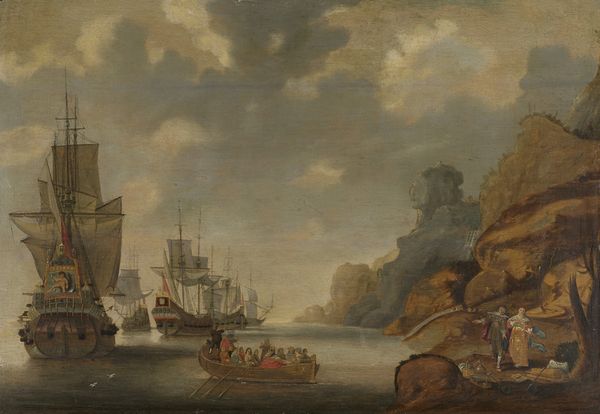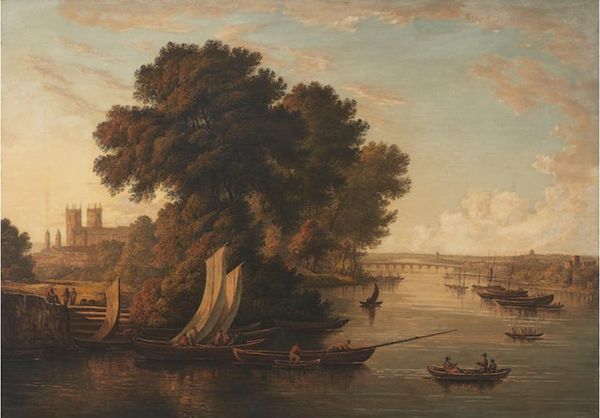
Dimensions: height 75 cm, width 106 cm, depth 9 cm
Copyright: Rijks Museum: Open Domain
Antoine van der Steen made this "View of the Dardanelles" with oil on canvas in the late 18th century. Looking closely, the painting's surface reveals how the artist skillfully layered thin glazes of color to create a luminous and atmospheric effect. It's important to consider how the pigments were sourced and ground, as these processes would have significantly impacted the final appearance. The use of canvas, stretched over a wooden frame, speaks to a tradition of easel painting that was becoming increasingly standardized. The painting’s subject matter, a bustling port, hints at the networks of trade and cultural exchange that defined the era, yet also reflects the labor involved in maintaining maritime infrastructure, constructing and sailing the ships, and processing the goods that passed through the Dardanelles. So, by examining not only the image itself but also the materials, making, and social context, we can gain a deeper understanding of its cultural significance. This approach encourages us to reconsider the traditional hierarchies between art and craft.
Comments
No comments
Be the first to comment and join the conversation on the ultimate creative platform.
